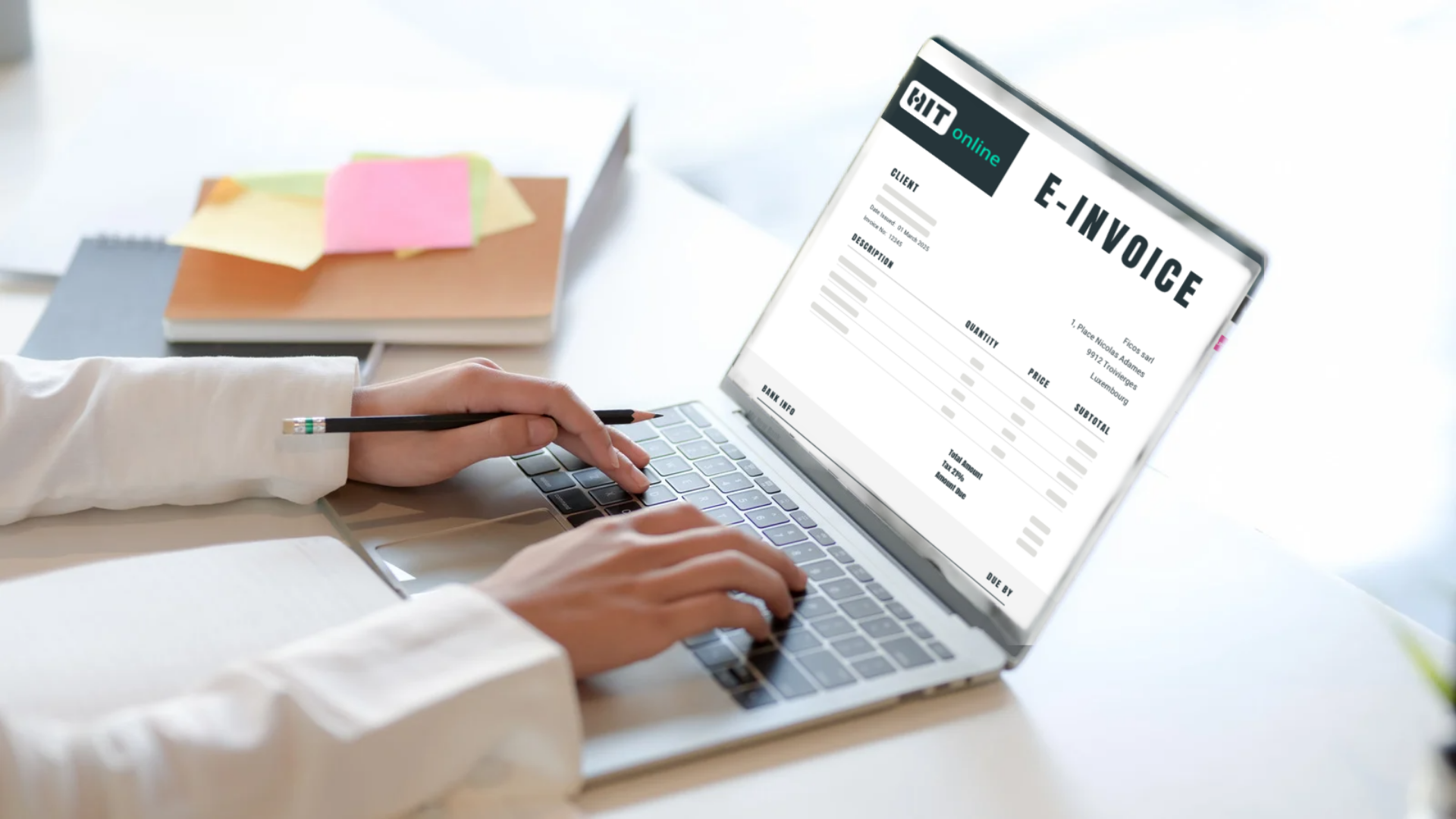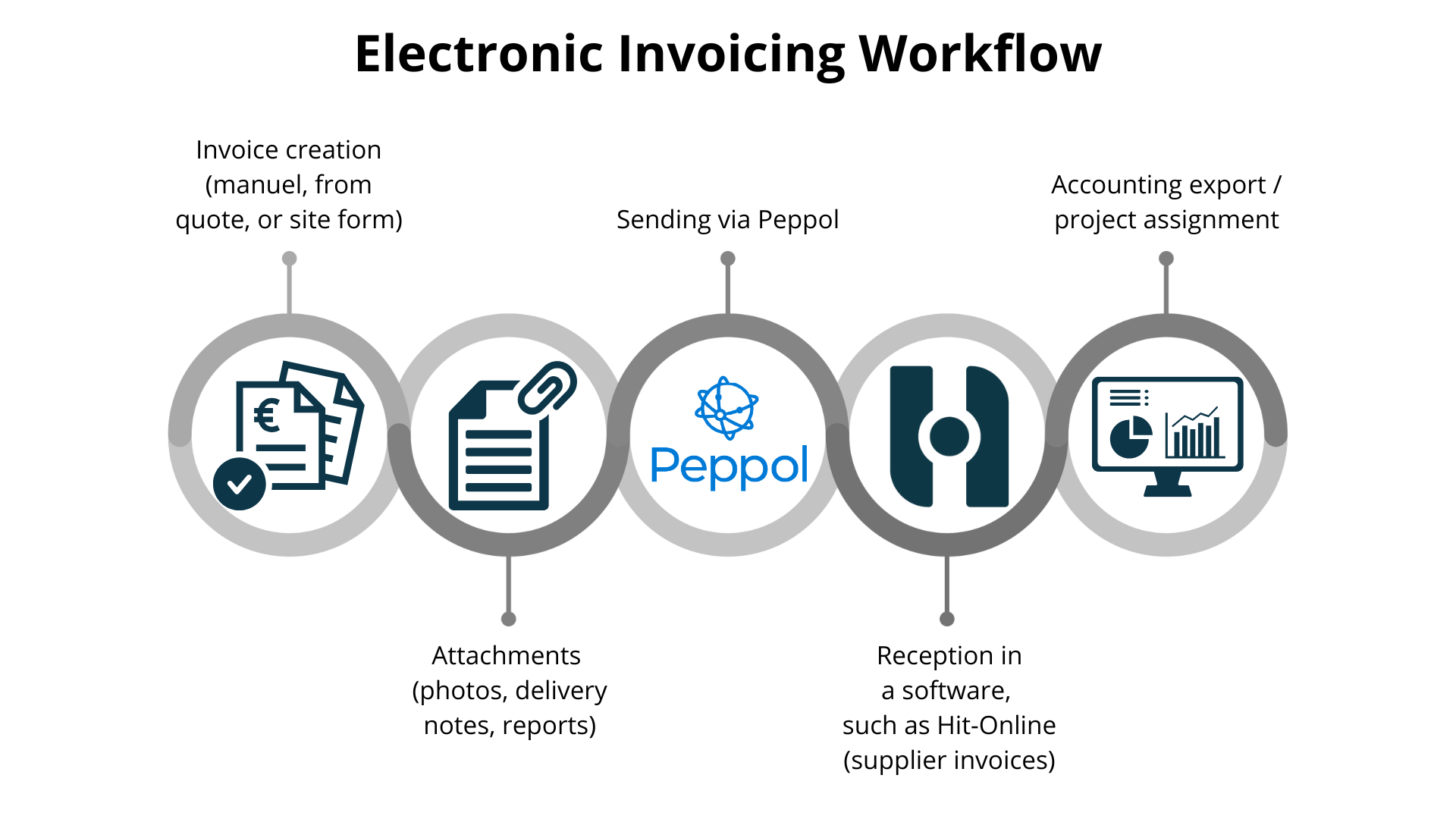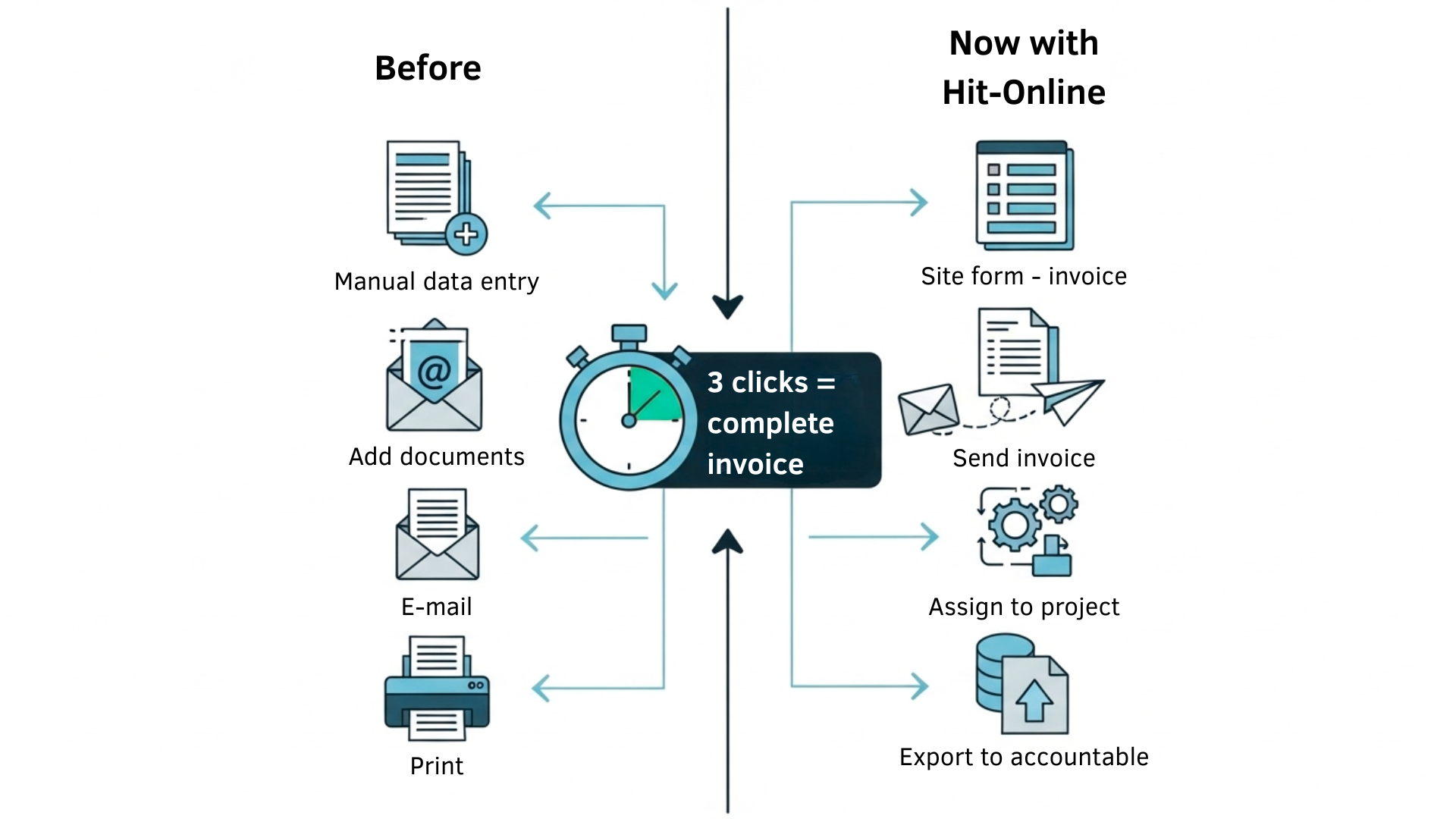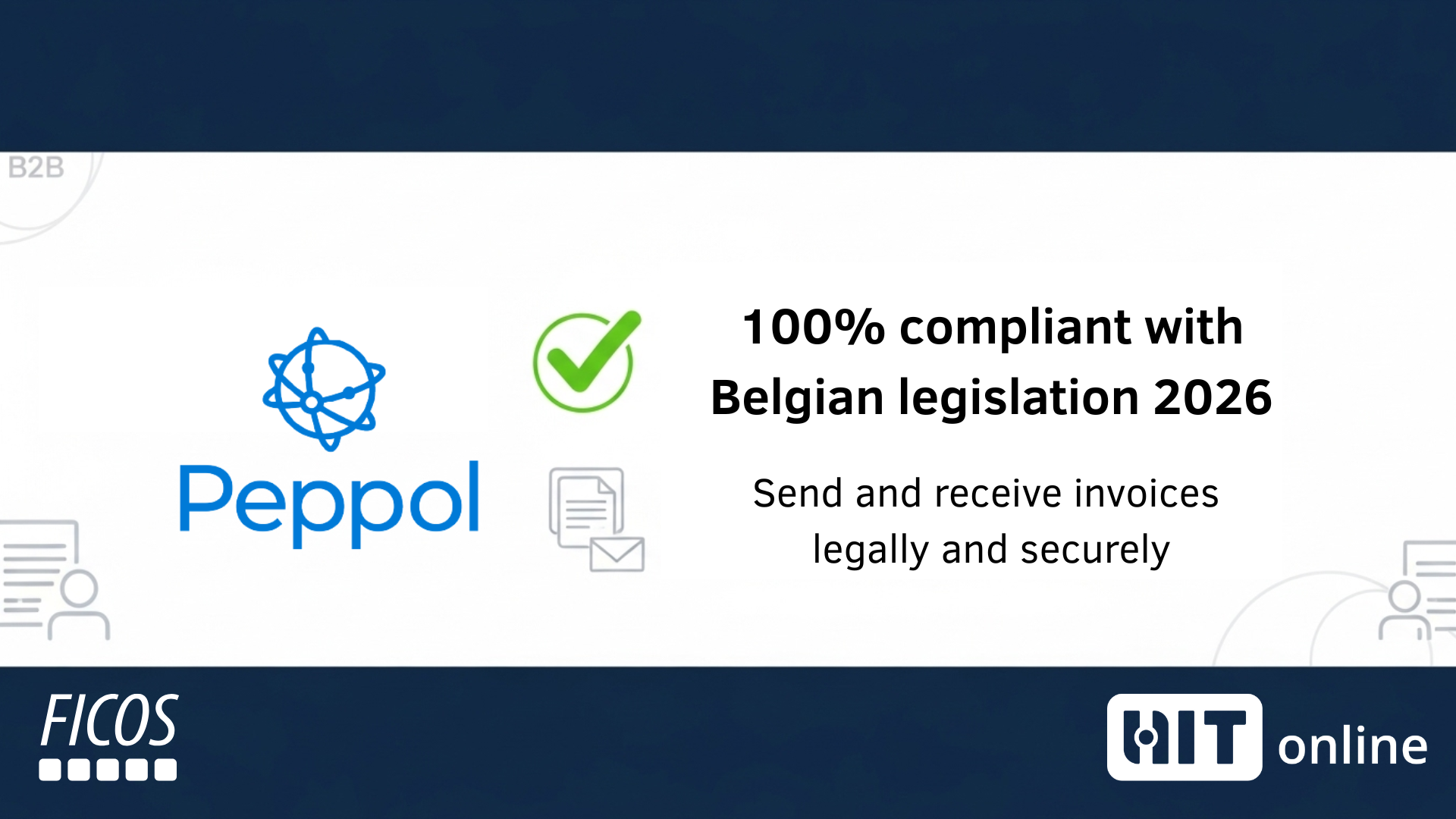Digitize Your Invoices in Record Time – Effortless E-Invoicing with Hit-Online

E-Invoicing: How Does It Work in Practice?
Sending, Receiving, Attachments and Accounting Transfer with Hit-Online
As electronic invoicing becomes more widespread in Belgium, many construction companies are wondering:
- How does it actually work?
- Is it difficult to set up?
- What are the real differences compared to sending a PDF via email?
In this article, we explain step by step how to manage an e-invoice in Hit-Online — whether you want to send it, receive it, attach documents, or forward it to your accountant.
Good news: everything is designed to save you time on a daily basis.

Creating an E-Invoice in Hit-Online
Five simple ways to create an invoice:
- Manual invoicing: freely enter an invoice, with or without linking it to a project.
- From an accepted quote/project: Hit-Online automatically converts your quote or project into an invoice.
- From a site report form: Work recorded by your team (via smartphone/tablet) auto-generates cost lines, which are imported into the invoice.
- Based on a progress statement: You can also invoice based on a progress statement.
- From another invoice: Easily reuse lines from a previous invoice.
Each method helps you save time and ensures data consistency — no more manual copying, everything is ready to go.
Adding Attachments
When editing the invoice, you can attach supporting documents such as:
- Purchase orders
- Service details
- Worksite photos
- Reports
- Certificates
These files are sent along with the invoice via the Peppol network, enabling clients to quickly understand and process the invoice.

Automated Sending via Peppol
Once your invoice is ready:
- Click “Send as e-invoice”
- Hit-Online converts it into the structured UBL format required by Belgian law
- It is sent via Peppol — traceable, secure, and compliant
Advantage: nothing to configure. It’s all automatic and 100% compliant.
Receiving Incoming Invoices
When a supplier sends you an e-invoice via Peppol:
- It goes directly into Hit-Online’s “Transactions” module
- You can open the PDF and view attachments (delivery slips, etc.)
- All invoice lines are pre-filled
- One-click to validate and add to your invoice records

Project Assignment:
- Click “Assign to projects”
- Distribute the amount across one or multiple projects
- Even possible to allocate by line, based on cost type
Result: Your projects stay up-to-date, costs are properly allocated, and no detail is missed.
One-Click Export to Accountant
All validated invoices can be exported via:
- Structured accounting export: In seconds, Hit-Online generates a file ready for your accountant (compatible with standard accounting software)
Advantage: no input errors — everything is ready for accounting.
Why Are Attachments Strategic?
Attaching documents to e-invoices allows you to:
- Speed up validation
- Avoid disputes over unclear charges
- Improve client trust through transparency
Example: Adding a photo report to a repair invoice helps the client immediately see the work done — accelerating approval.

Conclusion
E-invoicing with Hit-Online is not complex or limited to large companies.
It helps you save time, reduce errors, and gain full visibility of your project costs.
Whether it’s to:
- Create an invoice in 2 minutes
- Add supporting documents
- Send it via Peppol
- Allocate it to projects
- Or export it to your accountant
Hit-Online supports you every step of the way in your digital transformation.

Get 2 months free to test e-invoicing with Hit-Online and discover its full potential for your construction business.
Make your construction company future-ready
Trust Hit-Online, the software made by construction professionals for construction professionals.
Get Free Demo